Introduction
The world of transportation is on the brink of a transformative revolution, driven by advancements in communication technology. Vehicle-to-Everything (V2X) communication is at the forefront of this revolution, promising safer, more efficient, and environmentally friendly transportation systems. V2X enables vehicles to communicate not only with each other but also with infrastructure, pedestrians, and even the surrounding environment. In this article, we’ll delve into the exciting realm of V2X communication, exploring its components, applications, benefits, and the role it plays in shaping the future of mobility.
V2X communication represents a remarkable shift in how vehicles interact with their surroundings. At its core, this technology relies on wireless communication protocols, primarily Dedicated Short-Range Communications (DSRC) and Cellular Vehicle-to-Everything (C-V2X), to facilitate real-time data exchange. These protocols enable vehicles to send and receive crucial information over both short and long distances.
One of the key components of V2X is the integration of onboard sensors and communication systems within vehicles. These systems include radar, lidar, cameras, and GPS receivers, all working in unison to gather data about the vehicle’s environment. This data is then processed and transmitted, allowing vehicles to make informed decisions and respond to various situations.
The applications of V2X communication are diverse and far-reaching. Road safety takes center stage as V2X facilitates advanced driver assistance systems (ADAS), collision avoidance, and traffic management. Vehicles can exchange information about their speed, position, and intentions, reducing the risk of accidents. Moreover, V2X enables traffic lights and road signs to communicate with vehicles, optimizing traffic flow and reducing congestion.
Environmental benefits are another crucial aspect of V2X communication. By enabling more efficient driving patterns, such as smoother acceleration and deceleration, V2X contributes to reduced fuel consumption and lower emissions. Additionally, traffic optimization can minimize congestion-related idling, further reducing the environmental footprint of transportation systems.
In the realm of urban planning, V2X has the potential to revolutionize how cities are designed and managed. Traffic signals that adapt in real-time to traffic conditions can alleviate congestion and improve air quality. Moreover, smart city initiatives can leverage V2X data to enhance infrastructure planning, making cities more responsive and sustainable.
Despite its numerous advantages, V2X communication faces challenges, notably in data privacy and cybersecurity. Protecting sensitive information from unauthorized access is paramount, and robust security measures are essential to ensure the integrity of V2X systems.
In conclusion, Vehicle-to-Everything (V2X) communication represents a paradigm shift in transportation. With its ability to enhance road safety, reduce environmental impact, and revolutionize urban planning, V2X is poised to play a pivotal role in shaping the future of mobility. As this technology continues to evolve and mature, we can anticipate safer, more efficient, and more sustainable transportation systems that benefit us all.
If you’d like to dive deeper into this subject, there’s more to discover on this page: Sensors | Free Full-Text | Smart Transportation: An Overview of …
At its core, V2X communication is all about connectivity. It leverages wireless communication technologies to enable vehicles to share data with various entities, creating a dynamic network within the transportation ecosystem. Two primary technologies drive V2X communication:
Certainly, let’s dive deeper into the core of V2X communication, which relies on two primary technologies:
1. Vehicle-to-Vehicle (V2V) Communication:
- V2V communication forms the cornerstone of V2X technology. It enables vehicles on the road to exchange critical information directly with each other, enhancing safety and situational awareness.
- Through V2V communication, vehicles transmit data such as speed, position, direction, and braking status to nearby vehicles in real-time.
- This information helps vehicles make rapid decisions, such as adjusting speed or changing lanes, to avoid collisions and improve overall road safety.
- V2V communication also plays a vital role in enabling autonomous vehicles to navigate complex traffic scenarios by receiving information from neighboring vehicles about road conditions and traffic patterns.
2. Vehicle-to-Infrastructure (V2I) Communication:
- V2I communication extends the connectivity beyond vehicles and encompasses interactions with roadside infrastructure and traffic management systems.
- Traffic signals, road signs, pedestrian crossings, and other roadside infrastructure can communicate with vehicles, providing real-time information about traffic conditions and signals.
- This technology enables vehicles to receive traffic signal information, allowing for optimized speed adjustments to minimize stops and improve traffic flow.
- V2I communication can also provide advance warnings about roadwork, accidents, or other hazards, enhancing driver safety and convenience.
Together, V2V and V2I communication create a dynamic ecosystem that fosters a more connected and informed transportation network. This connectivity is not limited to just vehicles; it includes pedestrians, cyclists, and even public transportation systems. By harnessing the power of these technologies, V2X communication holds the promise of safer roads, reduced traffic congestion, improved fuel efficiency, and, ultimately, a smarter and more efficient transportation landscape. As these technologies continue to evolve and expand, they are poised to revolutionize the way we travel and interact with our urban environments.
To delve further into this matter, we encourage you to check out the additional resources provided here: Qualcomm to Acquire Autotalks | Qualcomm
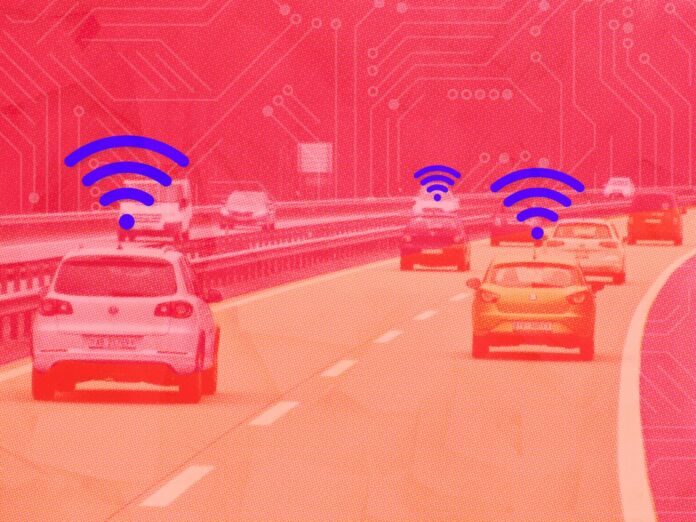
DSRC operates in the 5.9 GHz frequency band and is designed specifically for transportation applications. It allows vehicles to exchange safety-critical information with low latency, making it ideal for collision avoidance systems and traffic management.
“C-V2X, or Cellular Vehicle-to-Everything, is a newer communication technology that leverages existing cellular networks. It operates on both 4G LTE and 5G networks, providing a wide coverage area and compatibility with a range of devices beyond just vehicles. C-V2X offers the following advantages:”
Looking for more insights? You’ll find them right here in our extended coverage: Designing C-V2X Communication Systems: Key Engineering …

C-V2X, also known as 5G-V2X, utilizes cellular networks to enable communication. It offers the advantage of high-speed, long-range connectivity and seamless integration with existing mobile networks.
C-V2X, often referred to as 5G-V2X, marks a significant leap forward in vehicular communication technology. By harnessing the power of cellular networks, C-V2X provides vehicles with rapid, long-distance connectivity, seamlessly integrated with established mobile networks. This advanced technology empowers vehicles to exchange critical information and respond swiftly to changing road conditions, enhancing both safety and efficiency on our roadways. As the automotive industry continues to embrace C-V2X, we can anticipate a future where vehicles communicate effortlessly with each other and the surrounding infrastructure, ushering in a new era of smart and connected transportation.
To expand your knowledge on this subject, make sure to read on at this location: Revolutionizing Intelligent Transportation Systems with Cellular …

OBUs are installed in vehicles and serve as communication hubs. They collect and transmit data to other vehicles and infrastructure.
On-Board Units (OBUs) are the backbone of V2X communication, serving as the central communication hubs within vehicles. These compact devices are installed in various types of vehicles, including cars, trucks, buses, and even bicycles, enabling them to participate in the V2X ecosystem.
The primary function of OBUs is to gather and disseminate data crucial for V2X communication. Equipped with a suite of sensors and communication modules, OBUs constantly monitor the vehicle’s surroundings and internal conditions. This data includes information about the vehicle’s speed, location, acceleration, braking, and steering. It also encompasses environmental factors such as temperature, humidity, and road surface conditions.
Once collected, this data is processed and transmitted in real-time to other vehicles and infrastructure components within the V2X network. The OBUs use wireless communication protocols like DSRC or C-V2X to establish connections and exchange information. These transmissions occur rapidly, with minimal latency, ensuring that vehicles and infrastructure can respond promptly to changing conditions on the road.
OBUs play a pivotal role in various V2X applications. In the context of safety, they facilitate collision avoidance by sharing data about a vehicle’s position, speed, and trajectory with nearby vehicles. For instance, if one vehicle detects that another is approaching too quickly from a blind spot, it can send a warning signal to alert the driver or trigger automated safety systems like automatic emergency braking.
In traffic management, OBUs help optimize traffic flow by providing real-time updates on traffic conditions, road closures, and accidents. This information allows vehicles to make informed decisions about routes, speed adjustments, and lane changes, ultimately reducing congestion and enhancing overall traffic efficiency.
Additionally, OBUs enable vehicles to interact with traffic infrastructure such as traffic lights, road signs, and pedestrian crosswalks. By receiving and responding to signals from these elements, vehicles can navigate intersections safely and efficiently. For example, a vehicle approaching an intersection may receive a signal from the traffic light indicating that it will soon turn red. The OBU can relay this information to the driver or the vehicle’s automated systems, allowing for a smooth deceleration and reduced risk of collisions.
In summary, On-Board Units are the core enablers of V2X communication, transforming vehicles into active participants in an interconnected transportation ecosystem. Their ability to collect, process, and transmit data in real-time enhances road safety, traffic management, and environmental sustainability. As V2X technology continues to evolve, OBUs will remain at the forefront, driving the future of connected and intelligent transportation systems.
To delve further into this matter, we encourage you to check out the additional resources provided here: Securing Vehicle-to-Everything (V2X) Communication Platforms
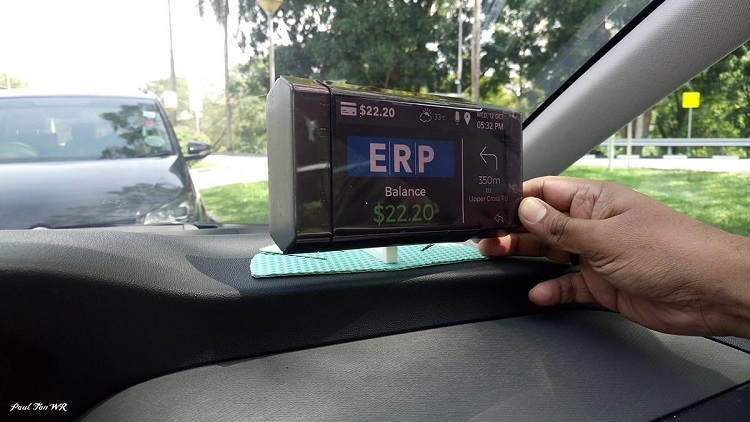
RSUs are placed along roadways and at intersections. They facilitate communication between vehicles and infrastructure, such as traffic lights and road signs.
Roadside Units (RSUs) are essential components of V2X communication, strategically positioned along roadways and at key intersections. These units serve as vital intermediaries in the dynamic exchange of information between vehicles and the surrounding infrastructure. Here’s a closer look at their role:
1. Enhancing Intersection Safety:
- RSUs positioned at intersections play a pivotal role in traffic management and safety. They receive data from traffic signals, pedestrian crossings, and other infrastructure elements.
- By relaying real-time traffic signal information to approaching vehicles, RSUs help drivers adjust their speed to time their arrival at green lights, reducing the need for sudden stops and minimizing traffic congestion.
- RSUs also contribute to pedestrian safety by informing vehicles of the presence of pedestrians at crosswalks, prompting alerts or adjustments to vehicle speed to prevent accidents.
2. Traffic Flow Optimization:
- RSUs aid in optimizing traffic flow by providing data on traffic density and congestion to traffic management systems.
- When traffic builds up in a particular area, RSUs can relay this information to traffic management centers, which can then adjust traffic signal timings or suggest alternate routes to alleviate congestion.
3. Emergency Vehicle Assistance:
- RSUs can detect and communicate the presence of emergency vehicles, such as ambulances or fire trucks, to nearby vehicles.
- When an emergency vehicle approaches an intersection, RSUs can trigger traffic signal preemption, ensuring that the emergency vehicle has a clear path through the intersection.
4. Data Collection and Analysis:
- RSUs serve as data collection points for traffic-related information. They gather data on vehicle speeds, traffic volumes, and other metrics.
- This data can be analyzed to gain insights into traffic patterns, congestion hotspots, and overall road network performance.
In summary, RSUs are integral to the successful implementation of V2X communication. They act as intermediaries that bridge the gap between vehicles and infrastructure, ensuring that the information flows smoothly in both directions. By facilitating real-time communication and data exchange, RSUs contribute to safer, more efficient transportation systems and help pave the way for smarter and more connected cities. As V2X technology continues to evolve, RSUs will play a central role in shaping the future of transportation.
Looking for more insights? You’ll find them right here in our extended coverage: Designing C-V2X Communication Systems: Key Engineering …
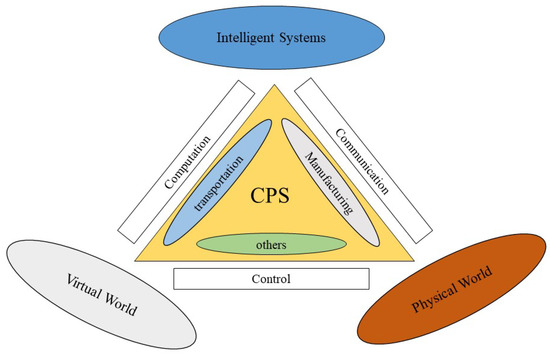
V2X systems often incorporate cloud-based platforms to process and analyze data, providing real-time insights and enhancing overall system functionality.
“These cloud-based platforms enable V2X systems to harness the power of big data analytics, machine learning, and artificial intelligence. By processing and analyzing vast amounts of data from vehicles, infrastructure, and other sources, these platforms can identify traffic patterns, predict congestion, and optimize traffic signals in real-time. This data-driven approach enhances the efficiency and effectiveness of V2X systems, ultimately leading to safer and more efficient transportation networks.”
To expand your knowledge on this subject, make sure to read on at this location: Unlocking the Advantages of V2X: Transforming the Future of …

V2X communication has a wide range of applications, including:
V2X communication is a versatile technology with a multitude of applications, each offering significant benefits for road safety, traffic management, and overall transportation efficiency. Some of its key applications include:
Vehicle-to-Vehicle (V2V) Communication: V2V communication enables vehicles to exchange real-time information with nearby vehicles. This includes data on speed, position, direction, and potential hazards. With V2V, vehicles can anticipate and respond to sudden braking, lane changes, and other critical situations, reducing the risk of accidents.
Vehicle-to-Infrastructure (V2I) Communication: V2I communication connects vehicles to roadside infrastructure such as traffic lights, road signs, and parking facilities. This allows for improved traffic flow, optimized traffic signal timing, and efficient parking management. Drivers can receive real-time information on traffic conditions and available parking spaces, enhancing their driving experience.
Vehicle-to-Pedestrian (V2P) Communication: V2P communication enhances pedestrian safety by enabling vehicles to detect the presence and movements of pedestrians. This technology can alert drivers to pedestrians in blind spots or at crosswalks, reducing pedestrian-vehicle accidents.
Vehicle-to-Cloud (V2C) Communication: V2C communication connects vehicles to cloud-based platforms, enabling data sharing and remote management. It facilitates over-the-air software updates, real-time traffic data, and access to advanced driver assistance features. V2C also supports predictive maintenance, allowing vehicles to proactively address maintenance needs.
Vehicle-to-Grid (V2G) Communication: V2G communication enables electric vehicles to interact with the electrical grid. EVs can feed surplus electricity back into the grid during peak demand, helping stabilize the grid and reduce energy costs. V2G technology plays a crucial role in promoting sustainable energy usage.
Vehicle-to-Everything (V2X) Communication: V2X communication encompasses all the above applications, creating a comprehensive ecosystem where vehicles communicate with other vehicles, infrastructure, pedestrians, and cloud-based systems. This holistic approach to communication maximizes safety, efficiency, and convenience in the transportation network.
As V2X technology continues to evolve and gain wider adoption, its applications will expand, ushering in an era of smarter, safer, and more efficient transportation systems.
For a comprehensive look at this subject, we invite you to read more on this dedicated page: Remarks: Deputy Assistant Secretary Hampshire, U.S. DOT Vehicle …

V2X-enabled vehicles can exchange information about their speed, position, and intended actions, helping to prevent accidents and reduce traffic congestion.
V2X-enabled vehicles are ushering in a new era of road safety and traffic management by serving as intelligent communicators on our streets and highways. These vehicles are not only capable of exchanging data about their speed, position, and intended actions, but they also do so seamlessly and in real-time, contributing to several significant benefits:
Enhanced Road Safety: V2X communication significantly enhances road safety by allowing vehicles to share critical information with one another. For example, if one vehicle detects that it’s about to collide with another due to sudden braking or an obstacle on the road, it can transmit an instant warning to the nearby vehicle. This rapid exchange of information enables both vehicles to take evasive actions or initiate safety measures such as automatic emergency braking, reducing the likelihood of a collision. Such warnings can be particularly crucial in scenarios where visibility is limited, such as during heavy rain, fog, or at night.
Accident Prevention: One of the most compelling aspects of V2X communication is its potential to prevent accidents altogether. By continuously sharing data about their speed, direction, and proximity, vehicles can predict potential collision scenarios and take preventive measures. For instance, if a vehicle is approaching an intersection and another V2X-equipped vehicle is about to run a red light, both vehicles can exchange signals, allowing the approaching vehicle to anticipate the violation and slow down to avoid a dangerous collision.
Reduced Traffic Congestion: V2X communication isn’t limited to vehicles alone; it extends to traffic infrastructure like traffic lights and road signs. This means that vehicles can receive real-time updates about traffic conditions, road closures, and even optimal routes. As a result, drivers can make informed decisions about their routes and speeds, which collectively contribute to reduced traffic congestion. Additionally, V2X-enabled traffic lights can adjust their timings based on traffic flow, further enhancing traffic management and reducing gridlock.
Improved Traffic Flow: When vehicles communicate their intentions, such as lane changes or merging, with nearby vehicles, it leads to smoother and more predictable traffic flow. For instance, if a vehicle signals its intention to merge into a crowded lane, surrounding vehicles can make space to accommodate the merge, reducing abrupt lane changes and maintaining a consistent flow of traffic. This not only reduces the risk of accidents but also results in less stop-and-go traffic.
Environmental Benefits: The reduced idling and smoother traffic flow facilitated by V2X communication can have environmental benefits. Reduced congestion and smoother acceleration and braking patterns contribute to lower fuel consumption and emissions. This aligns with broader sustainability goals, promoting greener and more efficient transportation systems.
In conclusion, V2X-enabled vehicles are revolutionizing road safety and traffic management by acting as active participants in a connected transportation ecosystem. The ability to share vital data in real-time allows vehicles to make split-second decisions that can prevent accidents, reduce traffic congestion, and enhance overall road safety. As this technology continues to evolve and more vehicles become V2X-equipped, we can expect further improvements in our daily commute and the overall efficiency of our transportation systems.
Should you desire more in-depth information, it’s available for your perusal on this page: As BlackBerry IVY Revolutionizes the Transportation Market, What’s …

V2X enables intelligent traffic management systems that can optimize traffic flow, reduce bottlenecks, and improve overall transportation efficiency.
V2X (Vehicle-to-Everything) technology is at the forefront of transforming our urban landscapes and transportation systems into intelligent, data-driven ecosystems. Here’s how V2X empowers intelligent traffic management systems to enhance transportation efficiency:
1. Real-Time Traffic Monitoring:
- V2X-equipped vehicles continuously transmit data about their speed, position, and traffic conditions. This data provides a real-time snapshot of road conditions.
- Intelligent traffic management systems use this information to monitor traffic flow and congestion, instantly identifying bottlenecks and areas with heavy traffic.
2. Dynamic Traffic Signal Control:
- With V2X, traffic signals can communicate directly with vehicles. Traffic management systems can adjust signal timings based on real-time traffic data received from V2X-equipped vehicles.
- For instance, if an approaching vehicle is part of a platoon (a group of vehicles traveling closely together), the traffic signal can extend the green light to allow the entire platoon to pass through, reducing stops and starts.
3. Proactive Congestion Management:
- V2X technology enables predictive algorithms to anticipate traffic congestion before it occurs. Traffic management systems can proactively reroute vehicles to alternate, less congested routes.
- Drivers can receive these rerouting suggestions via in-vehicle navigation systems, reducing the likelihood of getting stuck in traffic jams.
4. Improved Intersection Safety:
- At intersections, V2X-enabled traffic lights can prioritize safety by detecting approaching vehicles and pedestrians.
- If a pedestrian is about to cross the road, the traffic light can hold the red signal for a few extra seconds to ensure their safety.
5. Emergency Vehicle Priority:
- V2X can facilitate the swift movement of emergency vehicles by granting them priority at intersections.
- When an emergency vehicle approaches, traffic lights can preemptively turn green in its direction, allowing the vehicle to pass unimpeded.
6. Data-Driven Decision-Making:
- The wealth of data collected through V2X communications can be harnessed for data analytics. Traffic management systems can gain insights into long-term traffic patterns, enabling better urban planning and infrastructure improvements.
In essence, V2X-enabled intelligent traffic management systems bring a new level of adaptability and responsiveness to our roadways. They create a dynamic and efficient traffic environment where vehicles, infrastructure, and traffic management systems collaborate to optimize transportation. This not only reduces congestion and travel times but also enhances road safety, reduces emissions, and contributes to more sustainable and livable cities. As V2X technology continues to mature, its potential to revolutionize urban mobility and transportation efficiency is truly boundless.
For additional details, consider exploring the related content available here Sensors | Free Full-Text | Smart Transportation: An Overview of …
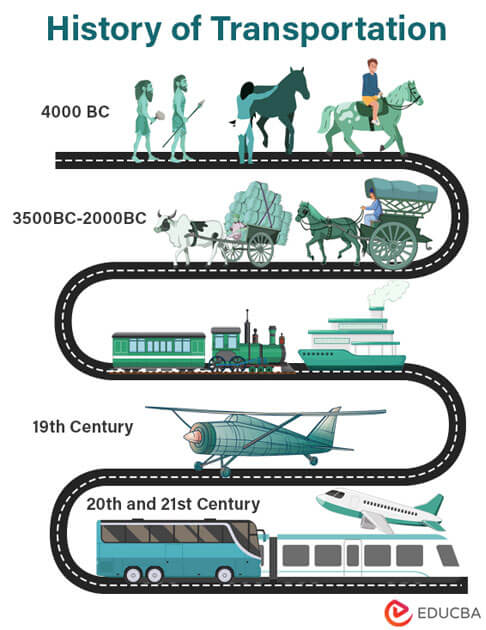
V2X systems can detect pedestrians and cyclists, alerting drivers to their presence and enhancing safety at crosswalks and intersections.
“In addition to alerting drivers, V2X systems can also communicate with wearable devices carried by pedestrians and cyclists, providing them with warnings about approaching vehicles. This bidirectional communication fosters a safer and more informed environment for all road users. As cities strive to become more pedestrian and cyclist-friendly, V2X technology plays a crucial role in achieving this goal by reducing accidents and enhancing the overall mobility experience.”
Explore this link for a more extensive examination of the topic: Revolutionizing Intelligent Transportation Systems with Cellular …

V2X allows for faster emergency response times by providing real-time information to first responders about the location and severity of accidents.
V2X communication systems are a game-changer when it comes to improving emergency response times. Here’s how:
Real-Time Accident Alerts: In the event of an accident, V2X-equipped vehicles can automatically transmit critical information to nearby vehicles and roadside infrastructure. This includes details about the location of the accident, the number of vehicles involved, the severity of the impact, and even airbag deployment. This real-time data is invaluable for first responders, as it helps them quickly assess the situation and dispatch the appropriate resources.
Precise Location Data: V2X technology provides highly accurate location data, often with centimeter-level precision. This means that emergency services can pinpoint the exact location of a vehicle involved in an accident, even if it’s in an unfamiliar or remote area. This capability reduces response times, especially in cases where traditional location methods might be less precise.
Reducing Secondary Accidents: By promptly notifying nearby vehicles about accidents, V2X communication can help prevent secondary accidents caused by sudden braking or swerving. This not only reduces the risk of additional injuries but also keeps traffic flowing more smoothly, preventing congestion that can hinder emergency responders.
Enhanced Situational Awareness: First responders can receive real-time updates on road conditions and traffic patterns, allowing them to choose the fastest and safest routes to the accident scene. This situational awareness is crucial for optimizing response times and ensuring the safety of both responders and accident victims.
Medical Data Sharing: In the case of medical emergencies, V2X systems can transmit vital health information from the vehicle to first responders. This information might include the driver’s medical history, allergies, or other conditions, enabling paramedics to provide more effective care upon arrival.
Adaptive Traffic Management: Traffic signals and infrastructure connected to V2X can adapt to prioritize emergency vehicles. For example, traffic lights can turn green in the direction of the approaching ambulance, further expediting the response.
In summary, V2X communication is a powerful tool for enhancing emergency response efforts. It not only saves crucial minutes during critical situations but also contributes to safer, more coordinated, and more efficient emergency services, ultimately improving outcomes for accident victims. As V2X technology continues to evolve and become more widespread, its positive impact on emergency response will only grow.
For additional details, consider exploring the related content available here As BlackBerry IVY Revolutionizes the Transportation Market, What’s …

V2X can help reduce emissions by optimizing traffic flow, reducing congestion, and enabling eco-friendly driving practices.
V2X communication, with its ability to optimize traffic flow and reduce congestion, plays a significant role in promoting eco-friendly driving practices and contributing to a reduction in emissions. Here’s how V2X technology helps in this regard:
Traffic Flow Optimization: One of the primary benefits of V2X communication is its impact on traffic flow. By exchanging real-time data about traffic conditions, road closures, and optimal routes, V2X-enabled vehicles can make informed decisions to avoid congested areas or choose routes with less traffic. This not only reduces travel times but also minimizes instances of stop-and-go traffic, a situation where vehicles frequently accelerate and brake. Smoother traffic flow leads to improved fuel efficiency and lower emissions since vehicles operate more efficiently at a consistent speed.
Eco-Friendly Routing: V2X communication allows vehicles to receive data about road conditions, traffic signals, and environmental factors. With this information, vehicles can select routes that are not only faster but also more eco-friendly. For example, a V2X-equipped vehicle can choose a route with less elevation change, fewer traffic signals, or roads known for reduced congestion. By avoiding routes with heavy traffic or frequent stops, vehicles can maintain a more efficient pace and consume less fuel, leading to reduced emissions.
Eco-Cooperative Driving: V2X enables eco-cooperative driving strategies, where vehicles work together to maximize fuel efficiency and minimize emissions. When a group of V2X-connected vehicles travels in close proximity, they can engage in platooning—a technique where vehicles follow each other closely to reduce air resistance. This can lead to significant fuel savings, especially for larger vehicles like trucks. Additionally, V2X communication allows vehicles to coordinate their speeds, ensuring that they maintain a consistent pace and avoid unnecessary acceleration or deceleration.
Environmental Data Integration: V2X doesn’t just communicate with other vehicles; it can also gather data from infrastructure and environmental sensors. For example, if a V2X-equipped vehicle approaches an area with poor air quality due to pollution or high pollen levels, it can provide the driver with recommendations to close windows and reduce air intake. By responding to environmental data, vehicles can help passengers avoid exposure to harmful pollutants and allergens, contributing to a healthier and more comfortable driving experience.
Reduced Idling: V2X communication can inform drivers about upcoming traffic signals, allowing them to adjust their speed to arrive at the signal during a green phase. This reduces the need for idling at red lights, further conserving fuel and minimizing emissions.
In summary, V2X communication plays a pivotal role in reducing emissions and promoting eco-friendly driving practices by optimizing traffic flow, enabling efficient routing, facilitating eco-cooperative driving, and integrating environmental data into the driving experience. As V2X technology becomes more widespread and integrated into our transportation systems, its positive impact on the environment and overall sustainability will continue to grow, contributing to cleaner and greener roadways.
For a comprehensive look at this subject, we invite you to read more on this dedicated page: Remarks: Deputy Assistant Secretary Hampshire, U.S. DOT Vehicle …
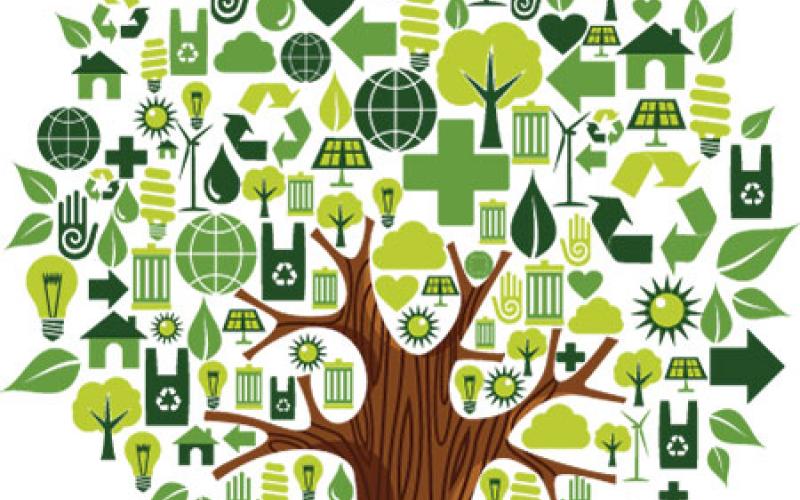
While V2X communication holds tremendous promise, it also comes with challenges:
Indeed, V2X (Vehicle-to-Everything) communication presents a bright future for transportation, but it’s not without its challenges. Here are some key considerations:
1. Standardization: One of the primary hurdles is establishing uniform standards for V2X technology. Without standardized protocols and frequencies, interoperability between different vehicle makes and models, as well as infrastructure, becomes challenging. Efforts to harmonize these standards are ongoing but require global cooperation.
2. Security and Privacy: V2X systems transmit sensitive data about vehicles and their surroundings. Ensuring the security and privacy of this data is paramount. Cybersecurity threats could compromise vehicle safety or expose drivers’ personal information. Robust encryption and authentication measures are necessary to mitigate these risks.
3. Infrastructure Deployment: Implementing V2X communication requires a significant investment in roadside infrastructure, such as RSUs (Roadside Units) and upgraded traffic lights. Expanding this infrastructure to cover extensive urban and rural areas is a logistical and financial challenge.
4. Retrofitting Existing Vehicles: Most vehicles on the road today are not equipped with V2X technology. Retrofitting them or waiting for natural vehicle turnover to adopt V2X can be a slow process. In the meantime, achieving the critical mass needed for full benefits can be delayed.
5. Data Management: V2X generates vast amounts of data. Effectively collecting, managing, and analyzing this data to derive actionable insights can strain existing IT systems. Developing robust data management solutions is crucial.
6. Liability and Legal Frameworks: Determining liability in the event of accidents or system failures involving V2X communication is complex. Legal frameworks and regulations need to adapt to accommodate this emerging technology.
7. Public Trust and Acceptance: Widespread adoption of V2X technology requires public trust in its reliability and safety. Ensuring that users have confidence in the technology’s capabilities is essential.
8. Spectrum Allocation: V2X relies on specific radio frequencies for communication. Spectrum allocation and allocation policies must be carefully managed to prevent interference and ensure reliable communication.
Despite these challenges, the potential benefits of V2X communication are substantial. Addressing these issues through collaborative efforts among industry stakeholders, governments, and regulatory bodies is vital to unlocking the full potential of this transformative technology. Overcoming these obstacles will pave the way for safer, more efficient, and more connected transportation systems in the future.
For additional details, consider exploring the related content available here Vehicle-to-Blockchain (V2B) Communication: Integrating Blockchain …

Safeguarding data privacy and cybersecurity is paramount in V2X systems to prevent unauthorized access and protect sensitive information.
“Ensuring the security of V2X systems involves implementing robust encryption protocols, regular software updates, and intrusion detection mechanisms. Additionally, industry standards and regulations are evolving to address cybersecurity concerns specific to V2X communication. Collaborative efforts among automakers, tech companies, and government bodies are crucial to establishing a secure and resilient V2X ecosystem. By prioritizing data privacy and cybersecurity, V2X systems can continue to offer the promise of safer, more efficient transportation while minimizing potential risks.”
Additionally, you can find further information on this topic by visiting this page: Sensors | Free Full-Text | Smart Transportation: An Overview of …

Establishing common standards for V2X communication is crucial to ensure interoperability and seamless communication between different vehicle makes and models.
Establishing standardized protocols and common standards for V2X communication is not just a technical necessity but a fundamental requirement for the widespread adoption and success of this transformative technology. Here are some key reasons why common standards are crucial:
Interoperability: Common standards ensure that V2X systems from various manufacturers can communicate seamlessly with one another. This means that regardless of the vehicle’s make, model, or year, V2X-equipped vehicles can exchange data effectively. It also extends to roadside infrastructure, ensuring that all components of the transportation ecosystem can communicate with one another.
Safety: V2X communication is primarily aimed at enhancing road safety. In emergency situations, where split-second decisions can mean the difference between life and death, there can be no room for communication errors or compatibility issues. Common standards minimize the risk of miscommunication, ensuring that critical safety messages are accurately transmitted and received.
Consumer Confidence: Consumers need to have confidence that their V2X-enabled vehicles will work as intended and provide the expected safety benefits. Knowing that V2X systems adhere to established standards gives consumers peace of mind that their vehicles will communicate effectively with others on the road.
Cost Efficiency: Standardization can lead to cost savings in the development, manufacturing, and deployment of V2X technology. When manufacturers follow common standards, they can benefit from economies of scale, reducing overall costs. This can make V2X technology more accessible to a broader range of vehicles and ultimately benefit consumers.
Global Deployment: V2X communication isn’t limited to a single country or region; it has the potential to improve road safety and traffic efficiency on a global scale. Common standards ensure that V2X-equipped vehicles from different parts of the world can communicate seamlessly when traveling internationally. This is especially important for cross-border transportation and global automotive manufacturers.
Innovation and Competition: While common standards ensure interoperability, they also foster innovation and competition. When manufacturers know that their products must adhere to certain standards, they can focus on developing innovative features and functionalities within those boundaries. This healthy competition can drive continuous improvements in V2X technology.
Regulatory Framework: Governments and regulatory bodies play a significant role in shaping the adoption of V2X communication. Common standards provide a clear framework for regulators to establish requirements and guidelines, ensuring that V2X technology aligns with broader transportation goals and safety objectives.
In conclusion, common standards for V2X communication are essential for creating a cohesive, efficient, and safe transportation ecosystem. They enable interoperability, promote consumer confidence, reduce costs, and facilitate global deployment. As V2X technology continues to evolve, these standards will serve as the foundation for its success, ultimately saving lives and improving the way we move on our roads.
Additionally, you can find further information on this topic by visiting this page: Qualcomm to Acquire Autotalks | Qualcomm

Widespread deployment of RSUs and other infrastructure components is necessary for V2X to reach its full potential.
The full realization of the potential benefits of Vehicle-to-Everything (V2X) communication hinges on the widespread deployment of Roadside Units (RSUs) and other essential infrastructure components. Here’s an exploration of why this infrastructure deployment is crucial for the success of V2X technology:
Network Reliability: RSUs serve as critical nodes in the V2X network. They provide a reliable and consistent connection between vehicles and the broader transportation infrastructure. The deployment of RSUs at key locations, such as intersections, highway on-ramps, and congested urban areas, ensures that vehicles can maintain continuous communication with the infrastructure. This reliability is essential for safety-critical applications, where split-second decisions can prevent accidents.
Intersection Management: RSUs at intersections play a pivotal role in optimizing traffic flow and reducing congestion. They can coordinate traffic signals, allowing for efficient management of vehicle movements. For example, RSUs can facilitate adaptive traffic signal timing, where signal phases change dynamically based on real-time traffic data. This helps to reduce wait times at red lights and minimize the start-stop pattern that contributes to fuel consumption and emissions.
Safety Applications: V2X technology is paramount for advanced safety applications, such as collision avoidance and intersection collision warning systems. RSUs positioned at intersections and along highways can transmit crucial safety information to vehicles approaching the area. This includes data on the position and speed of nearby vehicles, potential hazards, and traffic conditions. Widespread RSU deployment ensures that these safety-critical warnings are available across a broad range of scenarios and locations.
Traffic Management: Efficient traffic management relies on real-time data. RSUs can collect traffic data, such as vehicle counts, speeds, and congestion levels. This information can be used by transportation agencies to make informed decisions about traffic management, road maintenance, and infrastructure improvements. The deployment of RSUs across urban and rural areas creates a comprehensive traffic data network that aids in optimizing transportation systems.
Eco-Friendly Practices: RSUs can contribute to eco-friendly driving practices by providing vehicles with information about environmental conditions and traffic patterns. For instance, RSUs can relay data on weather conditions, air quality, and optimal routes for fuel efficiency. This information empowers drivers to make eco-conscious decisions, reducing emissions and fuel consumption.
Infrastructure Integration: As smart cities and smart transportation systems continue to evolve, RSUs can be integrated with other infrastructure components like traffic lights, parking systems, and public transportation networks. This integration enables holistic and coordinated urban mobility solutions, further enhancing the efficiency and sustainability of transportation.
Cybersecurity and Data Management: The deployment of RSUs also entails addressing cybersecurity challenges and data management. Protecting the integrity and privacy of data transmitted between vehicles and infrastructure is paramount. Widespread deployment allows for the implementation of robust security protocols and data management strategies to safeguard V2X systems against potential threats.
In conclusion, the widespread deployment of RSUs and related infrastructure components is a critical enabler of V2X technology. It ensures network reliability, supports advanced safety applications, optimizes traffic management, encourages eco-friendly driving practices, and facilitates integration with broader smart city initiatives. As cities and transportation agencies invest in the expansion of V2X infrastructure, we can expect safer, more efficient, and environmentally friendly transportation systems that benefit both individual drivers and society as a whole.
If you’d like to dive deeper into this subject, there’s more to discover on this page: Comments of the 5G Automotive Association Request for Comments …
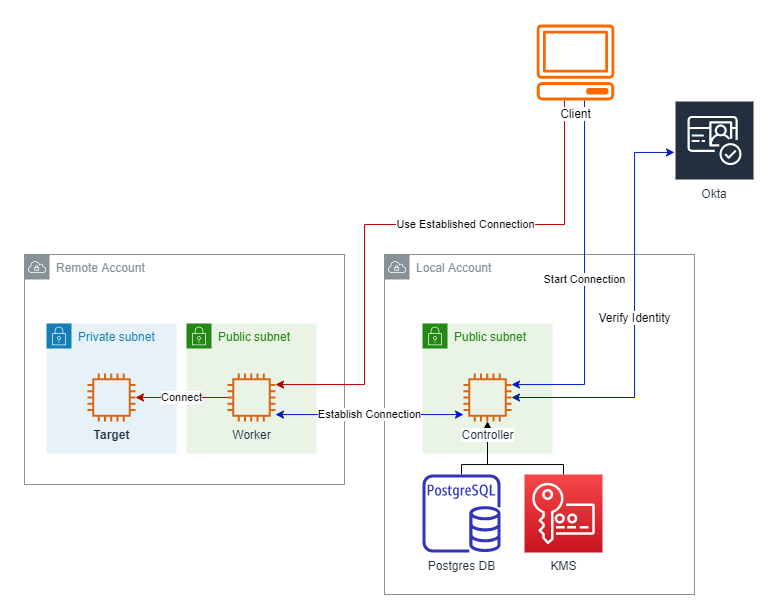
Conclusion
Vehicle-to-Everything (V2X) communication represents a paradigm shift in the world of transportation. By enabling vehicles to communicate with each other, infrastructure, and the surrounding environment, V2X has the potential to revolutionize road safety, traffic management, and environmental sustainability. As technology continues to advance and V2X systems become more integrated into our daily lives, we can expect transportation to become safer, more efficient, and increasingly connected. V2X is not just a technological evolution; it’s a transformative leap toward a smarter, more connected future of mobility.
Vehicle-to-Everything (V2X) communication stands at the forefront of a transportation revolution, poised to reshape how we move and interact on the roadways. This transformation is multifaceted and promises a host of benefits:
1. Enhanced Road Safety: V2X-equipped vehicles can exchange real-time information about road conditions, traffic congestion, and potential hazards. This exchange of data allows for advanced warning systems that can prevent accidents and save lives. Imagine receiving an alert about a vehicle running a red light at an upcoming intersection or being warned of slippery road conditions during inclement weather. V2X empowers drivers with vital information to make safer decisions.
2. Smoother Traffic Flow: Traffic congestion is a pervasive issue in urban areas. V2X enables intelligent traffic management systems that can optimize traffic flow by adjusting traffic signal timings, suggesting alternative routes to drivers, and even coordinating with nearby vehicles to reduce bottlenecks. This not only reduces travel times but also minimizes fuel consumption and emissions, contributing to environmental sustainability.
3. Environmental Sustainability: V2X technology can play a pivotal role in reducing the environmental footprint of transportation. By enabling more efficient traffic management and eco-friendly driving patterns, V2X contributes to lower fuel consumption and emissions. This aligns with global efforts to combat climate change and improve air quality.
4. Connectivity and Convenience: V2X doesn’t stop at safety and traffic management. It extends into the realm of convenience and connectivity. Imagine your vehicle seamlessly communicating with traffic lights to optimize your commute, or receiving real-time parking availability updates as you approach your destination. Such features make daily transportation more convenient and efficient.
5. Autonomous Driving: V2X is a critical enabler of autonomous vehicles. These vehicles can communicate with each other and the surrounding infrastructure to navigate complex traffic situations and make split-second decisions. This technology is fundamental to achieving the vision of fully autonomous and safe transportation.
As V2X technology continues to mature and become more integrated into our vehicles and roadways, we can anticipate a future where transportation is safer, more efficient, and increasingly connected. It’s not just an evolution; it’s a profound leap into a smarter, more connected era of mobility that holds the promise of transforming our daily lives for the better.
Explore this link for a more extensive examination of the topic: Unlocking the Advantages of V2X: Transforming the Future of …
More links
Additionally, you can find further information on this topic by visiting this page: Revolutionizing Intelligent Transportation Systems with Cellular …
